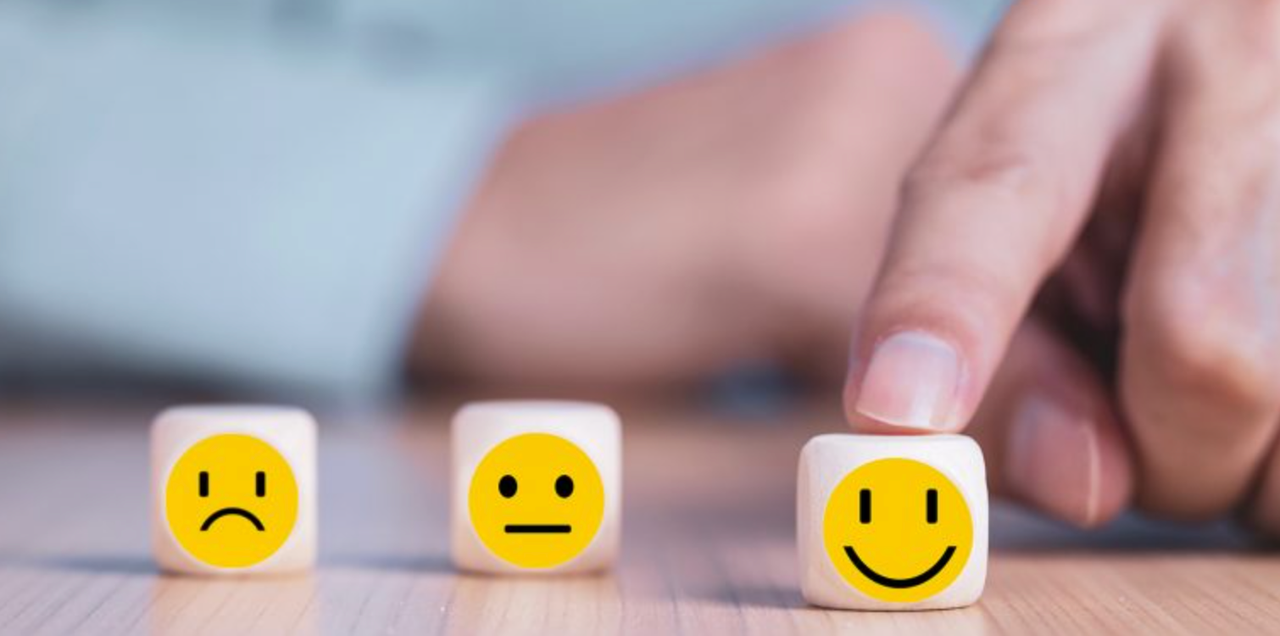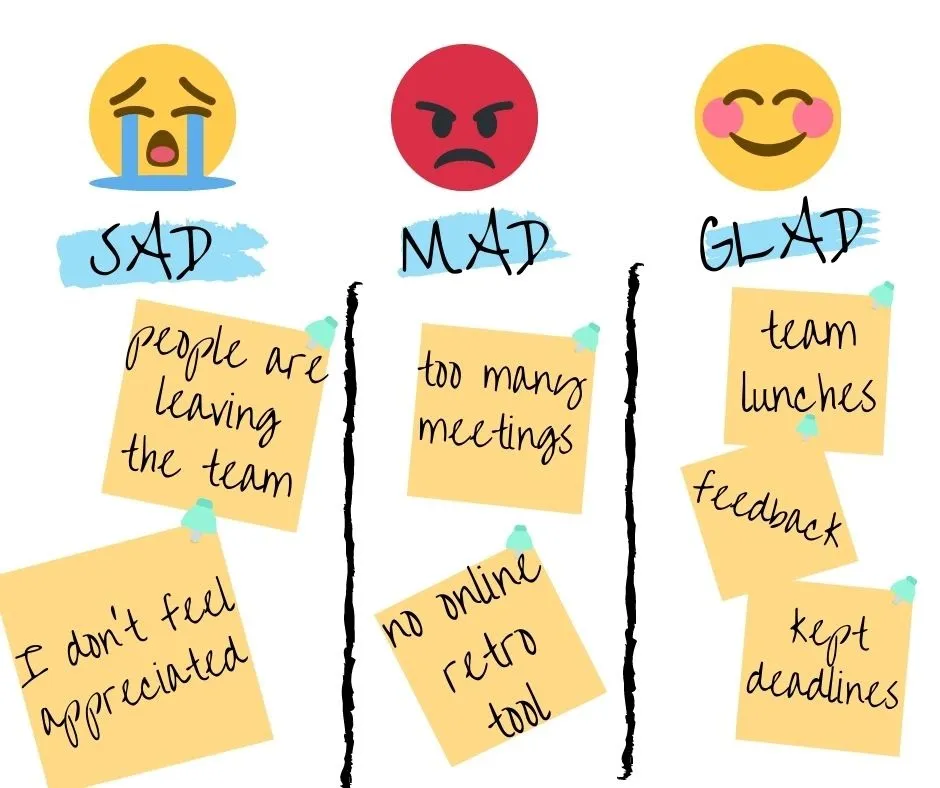
Mad Sad Glad is an Agile retro format that allows teams to discuss the feelings and emotions that surfaced over the course of the last sprint. This technique has the potential to improve emotional well-being by encouraging team members to focus on how to create a positive environment and boost morale.
How your team feels is a very important aspect of a healthy company culture and the Mad Sad Glad retrospective will provide valuable insights that you can act upon to develop this organizational pillar.
During this easy and fun exercise, your team members are able to uncover and analyze the positive and negative emotions they have experienced during the execution process of recent projects and improve their experience and performance.
A retrospective run using this format will usually last up to an hour, like most other retro formats.
You will need a board (virtual or physical), sticky notes, and pens. At the beginning, gather the team and explain the goals of the meeting and how it will work.
Divide the board into three columns called Mad, Sad, and Glad.
Each idea or experience should be documented on a separate sticky note and should refer to something that instigated feelings of sadness, fury, or relief in each of the contributors.
Especially in this retro format, ideas added to the board should be anonymized to encourage more sincere responses. While the team is encouraged to share their feelings, they should not feel pressured to always take ownership of them during the retrospective meeting.
Through an anonymized approach, the team will be able to generate a greater variety of honest feedback. Give the team 10 minutes to brainstorm and populate the board with ideas by guiding them with leading questions like:

Consider your ideas for the Mad column by asking questions like:
What frustrated you most during the last sprint and kept you from performing at your best?
What is your pet peeve about the team process?
Is there a part of the process you wish you could change, but feel like you can’t?
The Sad column is reserved for emotions associated with the following questions:
What disappointed me in the last sprint?
What do I wish we could do, but don’t see an opportunity?
Is there a pitfall of the process that we could avoid, but rarely do?
Finally, the Glad column collates positive experiences by asking team members to consider:
What made me happy during the last sprint (ex. People, events etc.)?
What did I enjoy the most?
What aspect of the process always helps us move forward?
Start by celebrating the topics in the Glad column to create an inviting environment. Then, begin to seek out common themes in the Sad and Mad categories by grouping topics. This will help to visualize the big-picture topics for the following discussion.
Spend no more than 5-10 minutes grouping common topics by theme. Ask the group to assist the facilitator and group topics based on how they understand their relationship to each other. Due to the fact that team members are closer to the work than the facilitator, they will see connections between topics that are not immediately apparent.
If you have more than 3-4 clusters, introduce dot voting to prioritize the topics that are most important for the group.
The final and most important step is to create a list of action items related to the themes you discussed and translate these into tangible goals for the next sprint. This will help you assess improvements during the next retrospective meeting!
Most retrospective formats are focused on improving efficiency, productivity, and processes.
As a result, the team’s well-being often takes a backseat. Discussing emotions within a group can be a powerful bonding experience as it fosters communication and helps create stronger relationships among team members on an emotional level.
Use the Mad Sad Glad retrospective to check on your teammates’ emotional wellbeing and discover ways to improve it.
This technique will allow you to build a more positive team dynamic that will improve communication and increase productivity in the long run!